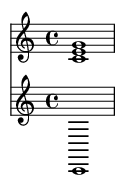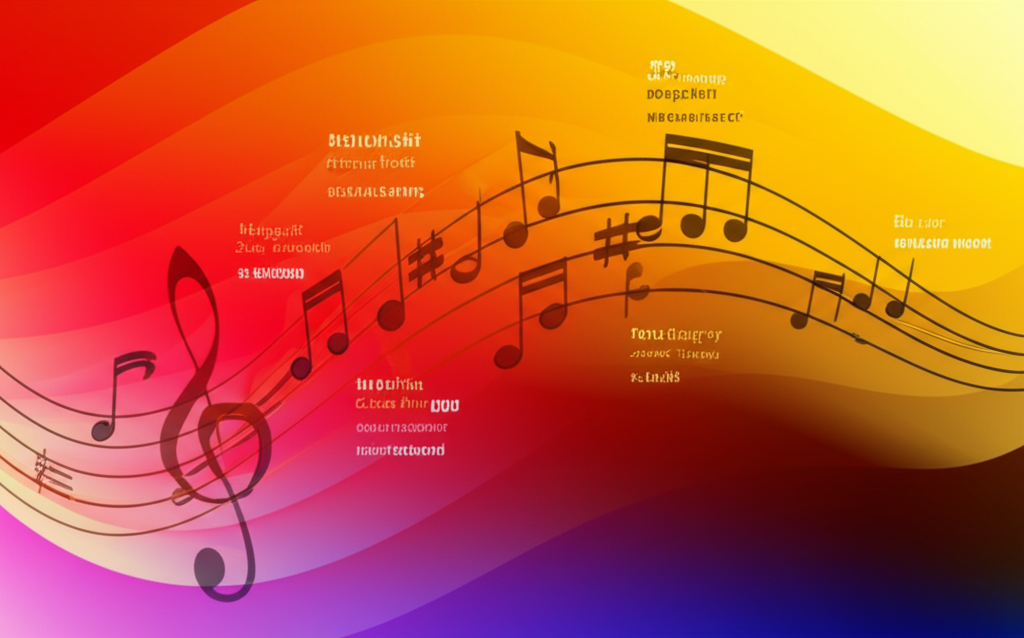Mastering the vi-IV-I-V Chord Progression in Alternative Rock
What is the vi-IV-I-V Progression?


The vi-IV-I-V chord progression is one of the most recognizable and widely used progressions in alternative rock and popular music. In the key of C major, this progression would be: Am (vi) - F (IV) - C (I) - G (V). This sequence creates a melancholic yet uplifting sound that has powered countless hit songs.
Historical Context and Musical Significance
This progression gained prominence in the 1990s alternative rock movement, though its roots trace back to classical and folk traditions. Bands like Nirvana, Radiohead, and Oasis frequently used variations of this progression, contributing to its signature alternative rock sound.
Technical Construction
Roman Numeral Analysis
- vi: Submediant chord (minor)
- IV: Subdominant chord (major)
- I: Tonic chord (major)
- V: Dominant chord (major)
Chord Formulas
In the key of C major:
- Am (vi): A-C-E
- F (IV): F-A-C
- C (I): C-E-G
- G (V): G-B-D
Practical Applications
Guitar Voicings
Common guitar voicings for this progression in open position:
- Am: x02210
- F: 133211
- C: x32010
- G: 320003
Piano Voicings
Basic piano voicings in root position:
- Am: A-C-E (left hand) + C-E-A (right hand)
- F: F-A-C (left) + A-C-F (right)
- C: C-E-G (left) + E-G-C (right)
- G: G-B-D (left) + B-D-G (right)
Famous Examples
This progression appears in numerous hit songs:
- "Zombie" by The Cranberries (transposed)
- "No Woman No Cry" by Bob Marley
- "Let It Be" by The Beatles (variation)
Progressive Exercises
Level 1: Basic Progression
Practice the progression in C major at 60bpm, focusing on smooth transitions between chords.
Level 2: Adding Rhythm
Incorporate common strumming patterns or piano rhythms while maintaining the chord changes.
Level 3: Transposition
Practice the progression in all 12 keys, starting with G major (Em-C-G-D) and D major (Bm-G-D-A).
Common Variations
- vi-IV-V-I (Am-F-G-C)
- vi-I-V-IV (Am-C-G-F)
- Adding sevenths: vi7-IVmaj7-I-V7
Cross-Genre Applications
While prominent in alternative rock, this progression appears in:
- Pop: Taylor Swift's "You Belong With Me"
- Country: Many modern country ballads
- Folk: Traditional folk songs
Historical Context and Musical Significance
Emerging prominently in late 1980s alternative rock, the vi-IV-I-V progression (e.g., Am-F-C-G in C major) revolutionized rock harmony by subverting traditional major-key expectations. Its melancholic yet accessible quality stems from the tension between the minor vi chord and subsequent major chords, creating what theorists call the "sensitive female chord progression" - a term popularized by Boston Globe's Marc Hirsh. This sequence gained cultural significance through bands like The Pixies ("Where Is My Mind?") and Weezer ("Say It Ain't So"), offering emotional ambiguity that resonated with Generation X disillusionment. Unlike the predictable I-IV-V blues progressions, vi-IV-I-V's circular motion evokes yearning without resolution, making it ideal for introspective lyrics. Its structural simplicity allows melodic freedom while maintaining harmonic cohesion, explaining its enduring popularity across decades.
Progressive Exercises
Beginner
Practice the progression in open positions: Am-F-C-G (A minor). Strum quarter notes at 60 BPM, focusing on clean chord transitions. Use a metronome and repeat until you achieve 30-second continuous play without hesitation. Record yourself and check against reference tracks like Green Day's "Boulevard of Broken Dreams" intro.
Intermediate
Modulate through keys: Play progression in E minor (C#m-A-E-B), then D minor (B♭-Gm-F-C). Incorporate rhythmic variations - try syncopated strumming patterns and palm muting. Add bass-note walks between chords (e.g., Am→F: A→G→F). Analyze chord functions: vi (tonic substitute) → IV (subdominant) → I (tonic) → V (dominant).
Advanced
Reharmonize with extended chords: Am9→Fmaj7→Cadd9→Gsus4. Develop modal interchange by borrowing chords from parallel minor (e.g., substitute B♭ for F in C major). Create variations like vi-IV-vi-IV-I-V. Improvise lead lines using A natural minor over vi, C major pentatonic over I, and G Mixolydian over V. Study Radiohead's "Creep" for chromatic alterations.
Ear Training Tips
Develop recognition through signature songs: Train with "Zombie" by The Cranberries (E minor: C#m-A-E-B) and "Someone Like You" by Adele (A major: F#m-D-A-E). Use the following techniques:
- Chord Quality Drills: Identify minor (vi) vs. major chords (I,IV,V) in isolation using apps like Tenuto
- Progression Mapping: Hum the root movement (6→4→1→5) while listening to tracks
- Transcription Practice: Notate 3 songs using vi-IV-I-V from Ultimate Guitar's database
- Functional Ear Trainer: Focus on distinguishing tonic/subdominant/dominant functions
Practice singing chord tones over backing tracks, starting with arpeggios then adding passing tones. The progression's descending bass line (A-G-F-E in C) provides a reliable auditory anchor.
Common Usage in Different Genres
While foundational in alternative rock, this progression adapts across genres through rhythmic and textural variation:
- Pop: Taylor Swift's "You Belong With Me" (C#m-A-E-B) uses bright acoustic strumming
- Punk: Blink-182's "Dammit" (Em-C-G-D) employs power chords and driving eighth-notes
- Folk: Passenger's "Let Her Go" (F#m-D-A-E) features fingerpicking patterns
- R&B: Alicia Keys' "No One" (Bm-G-D-A) adds seventh chords and syncopated grooves
- Electronic: Chainsmokers' "Closer" (Bm-G-D-A) uses synth pads with sidechain compression
In jazz contexts, musicians often substitute vi with ii-V (e.g., Dm7-G7 instead of Am in C major). Country adaptations typically feature pedal steel bends over I and V chords, while metal versions use drop-tuned power chords.
